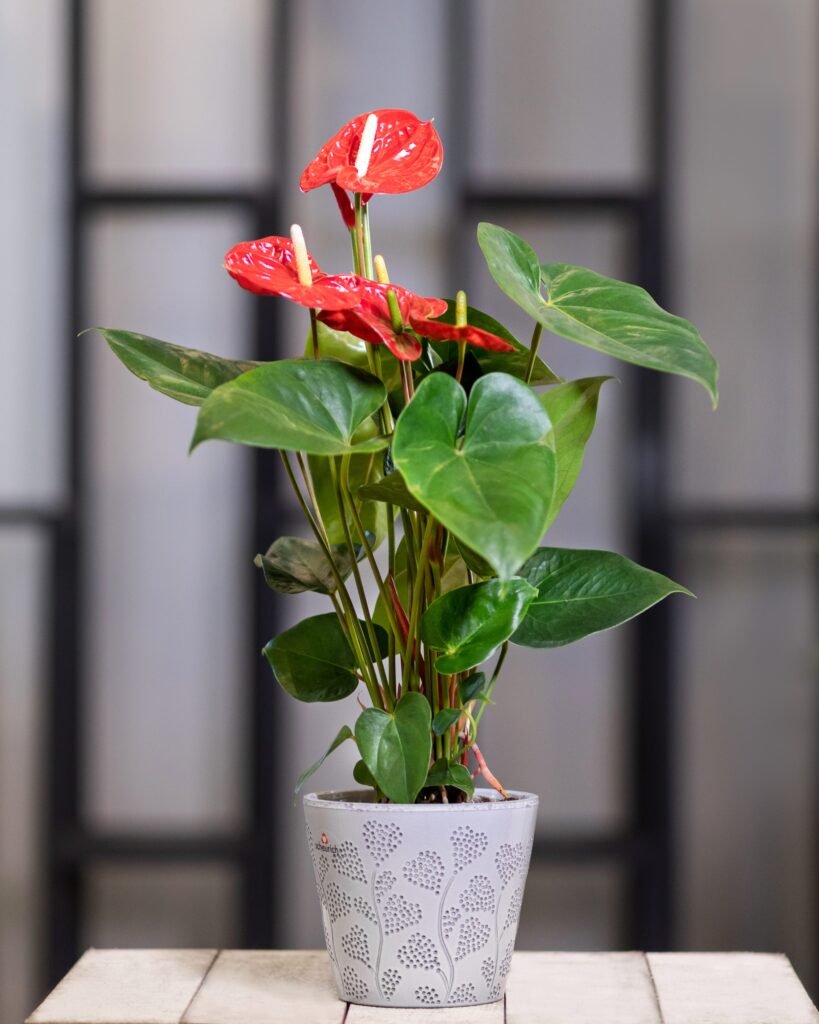ANTHURIUM
- admin
- July 11, 2024
- Uncategorized
-
Post Views: 462
- 0
- lighting: Anthurium needs a lot of bright diffused sunlight, but it should be protected from direct sun. It can tolerate low light conditions, but it will grow slower, and will not produce flowers (for flowering types of Anthurium).
- watering: during vegetation period the plant should be watered copiously (approximately every three-four days, but it depends on the growing conditions). In winter reduce the watering. It doesn’t like overdried soil as well as waterlogged one. Use mild, settled water of room temperature.
- fertilizing: during spring and summer Anthurium should be fed twice a month by organic or mineral fertilizers. Reduce frequency in the fall and winter.
- humidity: it requires 90% of air humidity. Anthurium should be moistened, but preferably only leaves. For higher level of humidity, it is necessary to put moistened clay peddles in the tray. Keep away from air conditioners and heaters which can dry the air.
- temperature: in hot season the plant prefers warm temperature, but not higher than 82°F. In winter it likes cool places with the temperature from 60 to 64 °F. It doesn’t stand drafts and temperature excursions.
- repotting: the plant requires repotting during February or March. The young plants need to be repotted once per year, for adult plants it is enough once in two-three years. Use a well-draining potting mix, such as a mix of potting soil, pine bark, and perlite.







